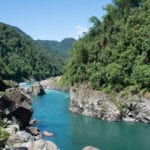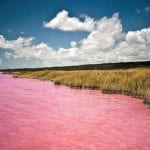 Movies and TV
Movies and TV  Movies and TV
Movies and TV  Health
Health 10 Miraculous Advances Toward Curing Incurable Diseases
 Miscellaneous
Miscellaneous 10 Undeniable Signs That People’s Views of Mushrooms Are Changing
 Animals
Animals 10 Strange Attempts to Smuggle Animals
 Travel
Travel 10 Natural Rock Formations That Will Make You Do a Double Take
 Movies and TV
Movies and TV 10 Actors Hidden in Your Favorite Movies
 Our World
Our World 10 Science Facts That Will Change How You Look at the World
 Pop Culture
Pop Culture 10 Incredible Female Comic Book Artists
 Crime
Crime 10 Terrifying Serial Killers from Centuries Ago
 Technology
Technology 10 Hilariously Over-Engineered Solutions to Simple Problems
 Movies and TV
Movies and TV 10 Movie Adaptions That Brought Popular Songs to Life
 Health
Health 10 Miraculous Advances Toward Curing Incurable Diseases
 Miscellaneous
Miscellaneous 10 Undeniable Signs That People’s Views of Mushrooms Are Changing
Who's Behind Listverse?

Jamie Frater
Head Editor
Jamie founded Listverse due to an insatiable desire to share fascinating, obscure, and bizarre facts. He has been a guest speaker on numerous national radio and television stations and is a five time published author.
More About Us Animals
Animals 10 Strange Attempts to Smuggle Animals
 Travel
Travel 10 Natural Rock Formations That Will Make You Do a Double Take
 Movies and TV
Movies and TV 10 Actors Hidden in Your Favorite Movies
 Our World
Our World 10 Science Facts That Will Change How You Look at the World
 Pop Culture
Pop Culture 10 Incredible Female Comic Book Artists
 Crime
Crime 10 Terrifying Serial Killers from Centuries Ago
 Technology
Technology 10 Hilariously Over-Engineered Solutions to Simple Problems
10 Mesmerizing Deserted Places
Even though deserted areas can appear cold and desolate at times, they are frequently anything but. When humans leave, nature takes over, transforming shipwrecks into waterlogged forests and old Italian flour mills into lush oases.
Mother Nature’s influence, in some ways, makes decaying antiques appear even more remarkable than they were before. Vacant buildings are eventually absorbed by the plants and, in some cases, the soil itself, leaving only a faint trace of our human presence. We discovered ten such deserted places that have been reclaimed by Mother Nature and offer a glimpse into a world without human interference.
Related: 10 Times Nature Ended Human Conflict
10 Ta Prohm, Angkor Wat, Cambodia
The temple of Ta Prohm is undeniably one of the most popular and largest of the several discovered at Angkor Wat. The temple’s disintegrating walls have been clothed by massively overgrown tree roots. The construction of Angkor Wat began in the 12th century and was overseen by King Jayavarman VII. Because enormous banyan tree roots have entwined their way through the temple walls and bulging ground, most passages in this Buddhist temple are now largely impassable.
Ta Prohm is, however, still open to the public and can be seen from the courtyards. Visitors to the site have sectioned off some portions for preservation, such as the well-known Crocodile Tree (famously featured in the film Tomb Raider). The remarkable engineering of the Ancient Khmer empire is in full evidence at Ta Prohm. Today the surrounding jungle has almost fully engulfed the temple, with its roots and plants absorbing the ancient walls.[1]
9 The Town of San Juan Parangaricutiro, Mexico
The remnants of a church commemorate the spot where the village of San Juan Parangaricutiro thrived until it was engulfed by lava and ash from the Paricutin Volcano, one of the youngest volcanoes on earth, in Mexico’s western state of Michoacan. When Vesuvius erupted in southern Italy in AD 79, it destroyed the town of Herculaneum and several other communities, including Pompeii. Likewise, when Paricutin erupted in 1943, it obliterated the town from which it derived its name, as well as San Juan Parangaricutiro.
Unlike the massive Italian volcano, which most likely killed thousands when it erupted, the Mexican volcanic eruption caused no casualties during its amazing eruption. Luckily, residents in the area were able to flee before the lava began flowing into the village several days later. Today, San Juan Parangaricutiro is a tourist attraction, a desolate, lava-covered region save for the remnants of the church, the bell tower, a portion of the facade, and an altar. All these have survived and are still used by local residents who come to light candles and pray.[2]
8 New World Shopping Mall, Bangkok, Thailand
The dilapidated and derelict New World Mall in Bangkok’s Bang Lam Phu neighborhood was developed in the early ’80s. However, it lasted a mere 15 years before closing for good. There are a number of reasons for its demise, including a history of misfortunes such as fires, collapses, and uncontrolled construction of its upper stories. The mall’s top floors also made it taller than the neighboring Grand Palace. This enraged residents because it is considered a “no-no” in the area for buildings to be built taller than this widely revered and historical landmark.
After the higher levels were partly demolished, leaving the building without a roof, the ground floor was left with almost 465 square meters (5,000 square feet) of entirely flooded space. This resulted in a massive mosquito outbreak, which became a serious concern in the neighborhood. Vendors and residents decided to take care of the problem themselves and began throwing fish in the pond to counteract the mosquito infestation. This led the fish population to grow in abundance over time. The peculiar ecosystem at one point housed approximately 3,000 koi, striped catfish, mango fish, and other species.
The story of the “deserted fish mall” ultimately became world news around 2015 and drew a lot of attention. Unfortunately, due to safety concerns, the fish were later collected with nets, with intentions to drain the pond later.[3]
7 Ross Island Penal Colony, India
The Nicobar and Andaman Islands are made up of over 500 small islands. One of these is known as Ross Island. By the 1850s, the British authorities in India began to use the island as a convict settlement, mainly to contain and secure a significant number of detainees from the Indian Rebellion of 1857. At the same time the British established the prison colony, they designated it as the administrative center for the entire group of islands and continued to build several amenities and houses at the location.
Thousands of its inhabitants were killed when a huge earthquake rocked the area in 1941. The Japanese subsequently took over control of the island and used its strategic position as a safe haven during World War II. Bunkers were erected to defend the Japanese soldiers, but ownership was returned to India after the war. Today, Ross Island is back in the hands of the Indian Navy. Once scuttling with people, it now lies deserted and fully overrun with jungle vines.[4]
6 The Town of Kolmanskop, Namibia
In the early twentieth century, German mining corporations landed on a stretch of the Kalahari Desert supplied only by a small railway station, 10 kilometers (6.2 miles) from the Namibian shore. Kolmanskop, the settlement that rose from the sand, would come to produce 12% of the world’s diamonds by 1912—at which point Namibia was under German rule. As a result, the small mining town went from a shabby collection of wooden structures to a remarkable display of European design, even boasting a music hall and a beautiful pub.
However, when richer diamond sources were located further south, the fortune-seekers left, and the dunes rushed in. The sand gets moved a lot in the Namibian desert due to its dry, windy climate. The town’s final inhabitants left sometime between 1955 and the 1960s, leaving the quaint little town to be recaptured by Namibian sandstorms. As a result, the sand began to pile up in the ornately designed structures, leaving us with nothing more than relics of a bygone era, ultimately reclaimed by the dunes.[5]
5 The Valley of Mills, Sorrento, Italy
The first thing that comes to mind when thinking of Italy is its stunning architecture, delicate wines, wonderful art, and incredibly beautiful coastal towns. While Vernazza, Sperlonga, and Scilla may spring to mind, many people are unfamiliar with the Italian town of Sorrento. The town sits on a cliff with amazing views overlooking the Bay of Naples. Sorrento is also known as the birthplace of the well-known (and delicious) liqueur Limoncello. Although there are numerous attractions in and around Sorrento, some remarkable lesser-known sites should not be overlooked.
A historic abandoned flour and sawmill can be found only a few minutes walk from the town’s main square. The historical stone structures of Il Vallone dei Mulini or the Valley of Mills, once the pulsing heart of the region’s pasta-making activities, are now buried beneath thick vegetation. Once you’ve seen it, it’s difficult to deny the old mill’s allure. Plants have overgrown its stairwells, surrounding paths, and the mill itself. The abundance of unruly vines and ferns, which imitates a fairytale tower in a magical realm, only adds to the eerie atmosphere of mystery and forgotten stories.[6]
4 The Fishing Village of Houtouwan, China
The fishing village of Houtouwan is located on an island in the Shengsi archipelago, fewer than 100 kilometers (62 miles) from the bustling streets of Shanghai on the mainland. Residents began to leave the village in the 1990s, and Houtouwan was completely enveloped by vegetation in less than 30 years. Amazingly, it was a fishing community with 3,000 residents only a decade before it was abandoned. When the island’s seafood supply became insufficient, fishermen moved their families to the mainland, with a few later returning to escort tourists around.
Today, only adventurous tourists venture to the island. Visitors like peering into the old and derelict houses, which often have a museum-like air to them, with relics of the past such as household and furniture items. Unfortunately, locals have had to put up warning signs because some of the structures are deemed hazardous to explore due to the plantlife hastening their ultimate deterioration.[7]
3 Carbide Willson Ruins, Quebec, Canada
Although many visitors to Gatineau Park are familiar with the Carbide Willson ruins, they may be unfamiliar with the man who built them. Thomas Leopold “Carbide” Willson, born in 1860 in Woodstock, Ontario, was a forerunner in the North American electrochemical industry, holding over 70 patents. The inventor’s fame and nickname “Carbide” stem primarily from his discovery of a calcium carbide manufacturing technique while working in the United States in 1892. As is often the case, this discovery was made possible by a series of fortuitous coincidences.
Although Carbide secured a piece of real estate in the early 1900s, his construction project was never completed as he died before it could be finished. The only thing that remains today is the building’s empty shell that gives us a glimpse of the beauty that could have been. The numerous empty spaces that would have been windows have instead become intertwined in the park’s twisting vegetation. A waterfall right beside the structure completes nature’s invasion.[8]
2 The Ghost Village Of Kayakoy, Turkey
Kayakoy is a small village located near the popular resorts of Olu Deniz and Fethiye. Yet, it is desolate and devoid of life. Its houses are falling apart, and the streets are deserted. However, Kayakoy was in full bloom around the turn of the nineteenth century. Schools, churches, shops, and businesses were bustling, and, in fact, the village was flourishing. The twist and most important portion of its history lies in the fact that Turks and Greeks coexisted inside the town. Outside of their beliefs and education, these two disparate ethnic groups lived an integrated life, and everyone just tried to make a decent living.
Kayakoy fell victim to a series of historical events, including the loss of the First World War, the collapse of the Ottoman Empire, and the attempted Greek annexation of the Anatolian region. The signing of the Turkish-Greek Population Exchange Treaty, however, was unquestionably the final nail in the coffin. Essentially, Greek Christians were deported from Turkey, while Muslim Turks were ejected from Greece. When an earthquake struck, the few inhabitants who remained finally left. Kayakoy’s residents were ultimately used as pawns in a larger game played by higher powers, a mistake still being made in many other countries and villages around the world.[9]
1 Chernobyl Exclusion Zone, Ukraine
In April 1986, a nuclear power plant explosion in Chernobyl, Ukraine (then part of the Soviet Union), caused a cloud of radioactive particles that swept across Europe. The catastrophe is now known as the worst nuclear disaster in history. With little time to prepare, 350,000 people had to be evacuated from the exclusion zone, the area surrounding the nuclear power plant. As such, many homes, workplaces, and classrooms remain in the same state as when their occupants left.
The Chernobyl Exclusion Zone has never piqued visitors’ interest as it has now, thanks to HBO’s chilling depiction of the nuclear disaster and its harrowing aftermath. When it comes to the world’s abandoned places, the forsaken town of Pripyat in Ukraine is undoubtedly worth mentioning. However, the exclusion zone, which first opened to the public in April 2019, is on our list today. Wildlife thrives here, including brown bears, lynxes, wolves, and an estimated 200+ bird species. Plantlife and vegetation surround the streets and buildings, showing that life will somehow always find a way.[10]








